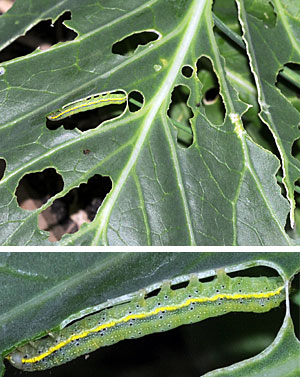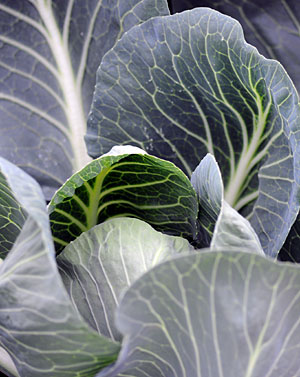Welcome to Relaxed Farming
- Alpacas
- Chickens
- Dairy Goats
- Ducks
- Geese
- Pigs
- Pygmy Goats
- Quail
- Rabbits
- Sheep
- Turkeys
- Polytunnel
- Photo Stories
- Video Stories
- Food
- Smallholding Map
- 2013
- 2014


- August
- September
- October
- November
- December
- January
- February
- March
- April
- May
- June
- July
- August


- 1
- 2
- 3
- 4
- 5
- 6
- 7
- 8
- 9
- 10
- 11
- 12
- 13
- 14
- 15
- 16
- 17
- 18
- 19
- 20
- 21
- 22
- 23
- 24
- 25
- 26
- 27
- 28
- 29
- 30
- 31
Thursday, 17th July 2014
We think the caterpillars (or larva) in these photos are Bright-line Brown-eye caterpillars! The Bright-line Brown-eye is a moth and a very common one, although not one we had heard of. They come in two types: a green and a brown version, as these photos clearly show. The polytunnel is certainly full of these and several other species of caterpillars at the moment and it would be great to try to identity them all. We tend to assume that caterpillars on cabbages and other greens are the 'cabbage-white' caterpillars (the clue is in the name) but there are a great many other varieties that are more than happy to feast on our vegetables and every day we have to remove 20-30 of them from our plants.
We tried a small experiment: we chose two beds of cabbages in the polytunnel, every day we removed all caterpillars from all the plants in one bed and the second (which contained just four plants) we left alone. The middle photo shows a fabulously healthy plant from the first bed showing no signs of caterpillar damage. The first and third photos show very badly eaten plants. Notice how the pale green/white veins in the leaves are left alone. These are hard whilst the leaf in between is fabulously juicy and easy to eat: just how our caterpillars love it!
Caterpillars eat a huge amount in order to have the energy to pupate and then emerge as a butterfly or moth. Their jaws (called mandibles) are very strong and efficient and they eat incredibly fast for their size. If you get your ear close enough you can actually 'hear' them munching. Most caterpillars eat just one type of plant and the butterfly or moth will cleverly lay its eggs on the plant that the caterpillar eats: how easy is that, to hatch and find breakfast waiting for you?? They are also 'poo machines' and so even if you are happy to eat hole-ridden cabbage leaves, they will need a jolly good washing first.
Butterflies and moths are insects, which of course mean they have six legs. Caterpillars 'look' like they have a lot more than six legs but actually they too have just six legs. Look at the caterpillar at the bottom of the first photo: its proper or true six legs are at the front near its head and are pointed. The four pairs in the middle of its body are known as prolegs and are there to help the caterpillar climb and hold on to the plants. There is a fifth pair on the end of its tail. The true legs will stay with the caterpillar once it becomes a butterfly or moth, the others won't.


